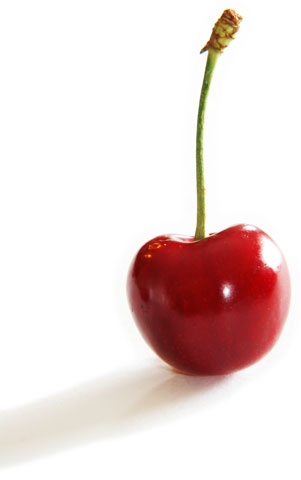Cherries in the orchard: Harvesting
After picking (cont from last issue)
After picking, cherries start to deteriorate quickly.
They are also susceptible to decay and bruise easily. Damage such as bruising (impact and compression) and pitting result in off flavours and high rates of respiration and ethylene production.
A drop of as little as 20 cm can cause cherries to bruise.
Fruit pitting is a condition in which areas near the surface of the cherry become sunken, forming dimples or pits.
Cherries need to be harvested with the stems attached. If the stems are removed, juice will exude and the cherries will quickly deteriorate.
Cherries sitting in the sun waiting to be delivered to the packinghouse can heat up quickly. Cherries left for two hours in full sun, with the air temperature at 21C were found to be 36C. Their temperature can rise to 45C after five hours in full sun.
Exposure to full sun’s heat and wind increases stem browning, fruit and stem shrivelling, and loss of fruit firmness.
Make sure the soil has sufficient water reserves. Cherries are mainly water. When there is insufficient water in the soil, the cherries cannot be re-inflated during the night.
There tends to be more quality problems with soft cherries in orchards where the fruit has low sugar (Brix) levels. Sugar levels are improved by good penetration of sunlight throughout the canopy, and not over-cropping the trees.
Harvest cherries in lined picking bags to prevent damage, then gently transfer to bins in the shade.
If the bins must be in the sun, use cardboard sheets, wet canvas or reflective tarps (white on the outside, shiny grey on the inside) to prevent heating and stop stems drying out.
Even if uncovered bins are kept under the shade of a tree, the temperature of the fruit rises and it loses water. Covering the bins helps prevent stem browning, a problem frequently found in Lapins.
Preserving the water in stems is the key to preventing stem browning.
Green stems denote freshness, whereas dried or brown stems are associated with lower quality cherries.
Remember that once the cherries are removed from the trees, there is no transport of water or sugars into the fruit. They must survive on their own.
Cherry quality deteriorates quickly at higher temperatures for two reasons:
•The respiration rate of harvested cherries depends on their temperature. Respiration consumes sugars and acids and also creates heat.
•Cherry quality also deteriorates due to the evaporation of water from the fruit, which is driven by vapour pressure deficit between the fruit and the surrounding air.
Therefore you must pick cherries early in the day, cover the bins if they remain in the sun, and keep the temperature low and humidity high around harvested cherries.
Transport to the packinghouse (cont next issue)
See this article in Tree Fruit Jan 2020






















